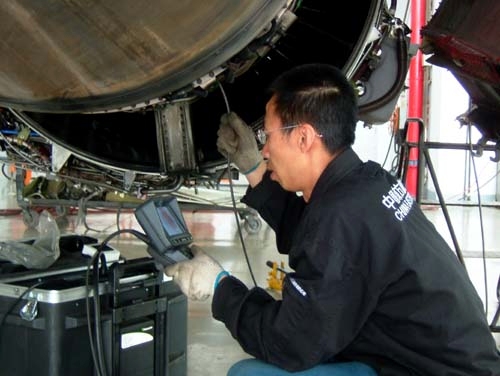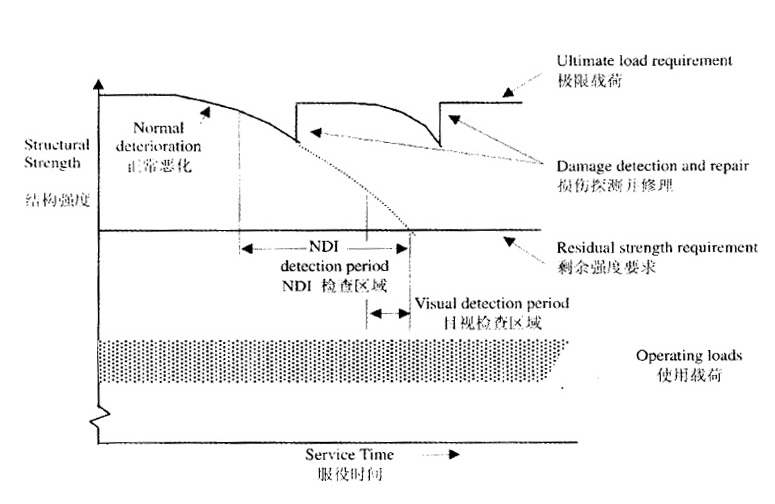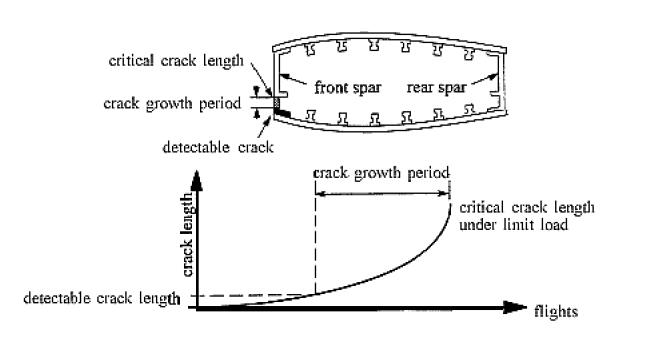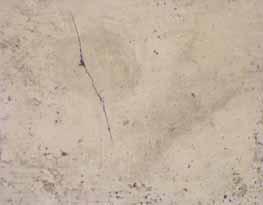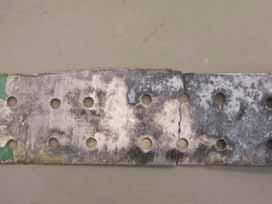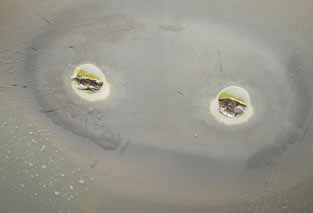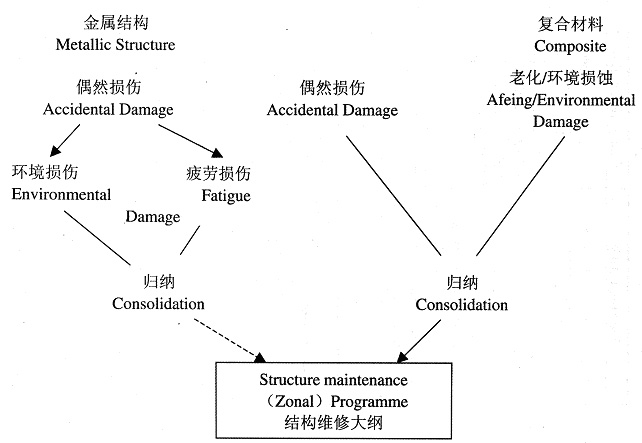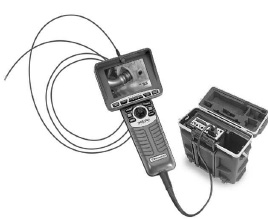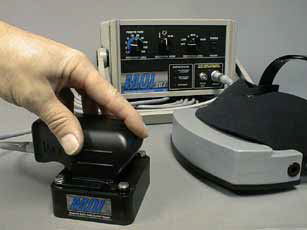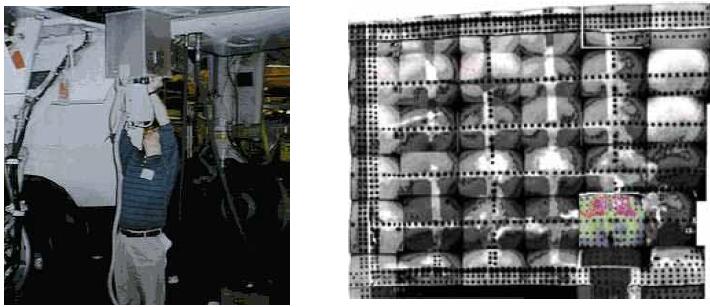With the development of aircraft structural design, the requirements for damage tolerance design based on fracture mechanics theory and quantitative assessment of non-destructive testing reliability have also been developed. According to the requirements of the three elements of the structural damage tolerance design principle, it is required to use the non-destructive testing technology to determine the maximum allowable defect size in the aircraft component, determine whether there is a defect in the component during use, and to what extent the defect develops. Therefore, the non-destructive testing technology is widely used in civilian use. The application of aircraft maintenance work is increasingly widespread. Since civil aircraft maintenance work plays an important role in ensuring the economic and safe operation of civil aircraft, the importance of non-destructive testing has gradually gained the attention of maintenance units, especially those engaged in structural maintenance. Compared with non-destructive testing in other industries, non-destructive testing in the maintenance of civil aircraft has distinctive features.
1. Testing environment and operation
Non-destructive testing of civil aircraft is mostly in-service testing, which is very different from non-destructive testing between raw materials and processing procedures. Due to the harsh operating environment of civil aircraft, in addition to the fatigue damage caused by normal flight of aircraft, there are environmental factors. Structural corrosion, etc., the occurrence of these defects will damage the structural integrity, causing a decrease in structural strength. According to the requirements of the damage tolerance design, the defects need to be inspected and repaired before the structural strength drops to the residual structural strength, and restored to the structural design strength (Fig. 1). Therefore, during the operation of the civil aircraft, in-service non-destructive testing work is very important. In the structural maintenance program recommended by the civil aircraft manufacturer, the threshold value, inspection method and inspection interval of the structural inspection are detailed. Since many non-destructive testing of civil aircraft is in-service inspection, there are problems in implementing non-destructive testing, such as difficulty, complicated surface conditions, and complex and diverse forms of defects.
Fig. 1 Three elements of damage tolerance
The features of non-destructive testing of civil aircraft maintenance are also reflected in the non-destructive testing work, which is mainly manual operation. Except for a few special components, there is basically no automatic or semi-automatic inspection device. This is because the aircraft structure and components are complex in shape, different in size and different in surface condition. Most of the inspections in aircraft maintenance are partial focus checks, so automatic or semi-automatic inspection devices cannot be used. Only automatic or semi-automatic inspection devices, such as turbine disks for certain engines, are used in the inspection of certain special components. Since the vast majority of inspections are performed manually, the quality of non-destructive testing of aircraft maintenance depends to a large extent on the actual operation of the non-destructive testing personnel. The influencing factors of non-destructive testing quality, especially human factors, require non-destructive testing personnel to have a high degree of responsibility and good technical level, and put forward higher requirements for the training of civil aviation non-destructive testing personnel.
2. Testing materials and objects
There are many kinds of materials for non-destructive testing of civil aviation. There are traditional metal materials, such as aluminum alloy, titanium alloy, alloy steel, and different types of composite materials, such as metal honeycomb structure, carbon fiber, glass fiber composite materials, etc. The main structural material of the aircraft body is aluminum alloy. Taking Boeing aircraft as an example, 2024 is widely used in fuselage skins, upper and lower airfoils of horizontal stabilizers, etc. 7075 is commonly used in structural parts such as fuselage skeletons and purlins. Various types of alloy steels are used in landing gear, engine hangers, high-strength structural components, etc. Titanium alloys are often used in engine hot components, hydraulic piping, landing gear, and the like. The use of composite materials is also becoming more and more widely used in aircraft structures, such as flaps, ailerons, rudders, etc., and the typical damage types and locations of these materials are different, which brings difficulties to the non-destructive testing of civil aircraft. . In order to inspect different types of defects in these various types of structural materials, each maintenance unit basically has the ability to have a variety of testing methods, but many maintenance units have not applied much testing methods due to the maintenance workload. Conducive to the accumulation of practical experience of non-destructive testing personnel, so the higher requirements for the training of civil aviation non-destructive testing personnel.
Non-destructive testing of civil aviation has a variety of structural forms, including skins, purlins, partitions, rims, reinforced sheets, etc., as well as various forms of components, such as various types of fasteners, wheels, and Drop frame, engine parts, etc., and different structural parts have different design principles, both safety life structure (Fig. 2), damage safety structure and damage tolerance design structure (Fig. 3), so non-destructive testing of civil aircraft At this time, it is necessary to understand the design principles, installation position, force form, and typical crack position of these different structural components. At the same time, due to the compact structure and complicated structure of the aircraft structure and components, it is determined when the civil aircraft is in-situ non-destructive testing. The location of the inspection and the location of the typical crack are important. In order to determine the location of a particular part of the aircraft, it is necessary to rely on the aircraft station system provided by the manufacturer.
3. Inspection defect and probability of inspection
The defect form of non-destructive testing of civil aviation is basically the structural discontinuity generated during use, that is, fatigue crack caused by fatigue damage (Fig. 4), corrosion caused by environmental damage (Fig. 5) and accidental damage (Fig. 6) Three types of damage generally do not involve metallurgical defects and processing defects caused by the manufacture and processing of raw materials. The requirements for non-destructive testing in civil aircraft maintenance are to discover the defects caused by the use process, mainly fatigue damage and corrosion. Due to the great influence of fatigue crack on the structural strength of the aircraft, it is a catastrophic failure of the civil aircraft structure. The main reason, therefore, the typical defects examined by civil aviation non-destructive testing are fatigue cracks, and the required fatigue crack size is required to be small. The damage to the structure of the aircraft is also very serious. Especially in the airline fleets mainly based on coastal areas, the problem of corrosion is very prominent. Due to the high price and long service life of civil aviation aircraft, the entire service life of the fleet is How to reduce the structural maintenance cost becomes an important aspect of the airline to reduce the maintenance cost. In order to reduce the structural maintenance cost, it is necessary to carry out timely repair when the structure is slightly corroded. Once the corrosion exceeds a certain standard, the structural maintenance will bring Maintenance costs and aircraft downtime have increased significantly, so in the non-destructive testing of civil aircraft, the inspection of corrosion is also very important. In order to effectively inspect and repair the damage existing in the aircraft structure, each maintenance unit needs to develop a structural maintenance program for the specific situation of the fleet (Fig. 7).
Non-destructive testing of civil aircraft requires higher detection sensitivity and defect detection probability, that is, it is necessary to check for smaller defects with a higher probability of detection. Take Boeing aircraft as an example. In the non-destructive testing manual provided by Boeing, In the eddy current testing of the body structure, it is generally required to be able to detect fatigue cracks having a length of 2.5 mm, and in some special processes, it is required to check the crack length to be smaller. In the maintenance of engine components, high-sensitivity or ultra-high-sensitivity fluorescence penetration inspection is required, and defects with a width of 0.5 μm to 1 μm and a depth of 2 μm to 20 μm can be inspected, and it is required to meet such detection sensitivity. There is a high probability of defect detection. According to the requirements of the damage tolerance design principle, non-destructive testing requires a 90% inspection probability for a specific size defect at a 95% confidence level. The reason for the high level of non-destructive testing of civil aircraft is that defects in aircraft structures and components that are not found and repaired in time may result in serious safety accidents or costly repairs.
Fig. 7 Structural maintenance outline
4. Inspection method and process
Compared with other industries, the methods used in non-destructive testing of civil aviation also have very distinctive features, such as eddy current, endoscope and other non-destructive testing methods that are less used in other industries. Eddy current testing has been widely used in aircraft maintenance, which is closely related to the aluminum alloy materials used in the fuselage structural components of the aircraft. In other industrial sectors, the non-destructive testing objects are rarely in the main structure like civil aircraft. A large number of aluminum alloy materials are used. The technical characteristics of eddy current testing determine that it is suitable for inspection of non-ferromagnetic materials, and is also suitable for in-situ inspection of aircraft. Therefore, eddy current method has become one of the main non-destructive testing methods for aircraft structural inspection. Since the aero-engine requires high reliability and the structure is very complicated and compact, it cannot be disassembled and inspected under the route conditions. Therefore, various forms of endoscopes are widely used in the routine maintenance and repair of the engine, such as various Types of hard tubes, hose endoscopes, electronic endoscopes, etc. (Figure 8). With the development of aircraft structural design principles and ideas, as well as the application of new materials and new processes on aircraft, and the size of defects required for aircraft maintenance is generally small, and requires a high probability of detection, so new The detection method is also continuously applied in the maintenance of civil aviation aircraft. In addition to the five conventional methods commonly used in non-destructive testing, some new non-destructive testing technologies are also frequently applied in the maintenance work of civil aircraft, such as MOI (magneto-optical inspection). (Fig. 9), infrared thermal imaging (Fig. 10), acoustic impedance/acoustic vibration, etc. The use of these new nondestructive testing technologies solves the problem of inspection of new materials that are constantly emerging in aircraft, improves detection reliability and detection efficiency. Reduce aircraft maintenance costs.
The non-destructive testing process and procedures of civil aviation are mostly provided by manufacturers. Since China Civil Aviation currently uses aircraft manufactured by Boeing Company of America or Airbus of Europe, the manufacturers provide more detailed testing procedures for both Boeing and Airbus aircraft. And procedures, only in the case of work items or some temporary work that some manufacturers do not provide inspection process, non-destructive testing personnel are required to determine the non-destructive testing methods and processes used for inspection, which is conducive to the standardization of non-destructive testing of aircraft maintenance, but not Conducive to the improvement of the technical level of non-destructive testing personnel. From the current technical status of non-destructive testing personnel of civil aviation, in addition to some maintenance units with large workload, the non-destructive testing personnel of most maintenance units have problems of familiarity with the non-destructive testing process of the maintenance fleet.
Fig. 10 Infrared thermal imaging inspection
In short, compared with the non-destructive testing technology used by other industrial sectors, the non-destructive testing of civil aircraft has distinct industry characteristics in terms of testing methods, testing objects, defect types, testing requirements and testing processes, in order to better complete civilian use. Non-destructive testing of aircraft, technicians engaged in non-destructive testing of civil aircraft should be aware of and familiar with these features.

